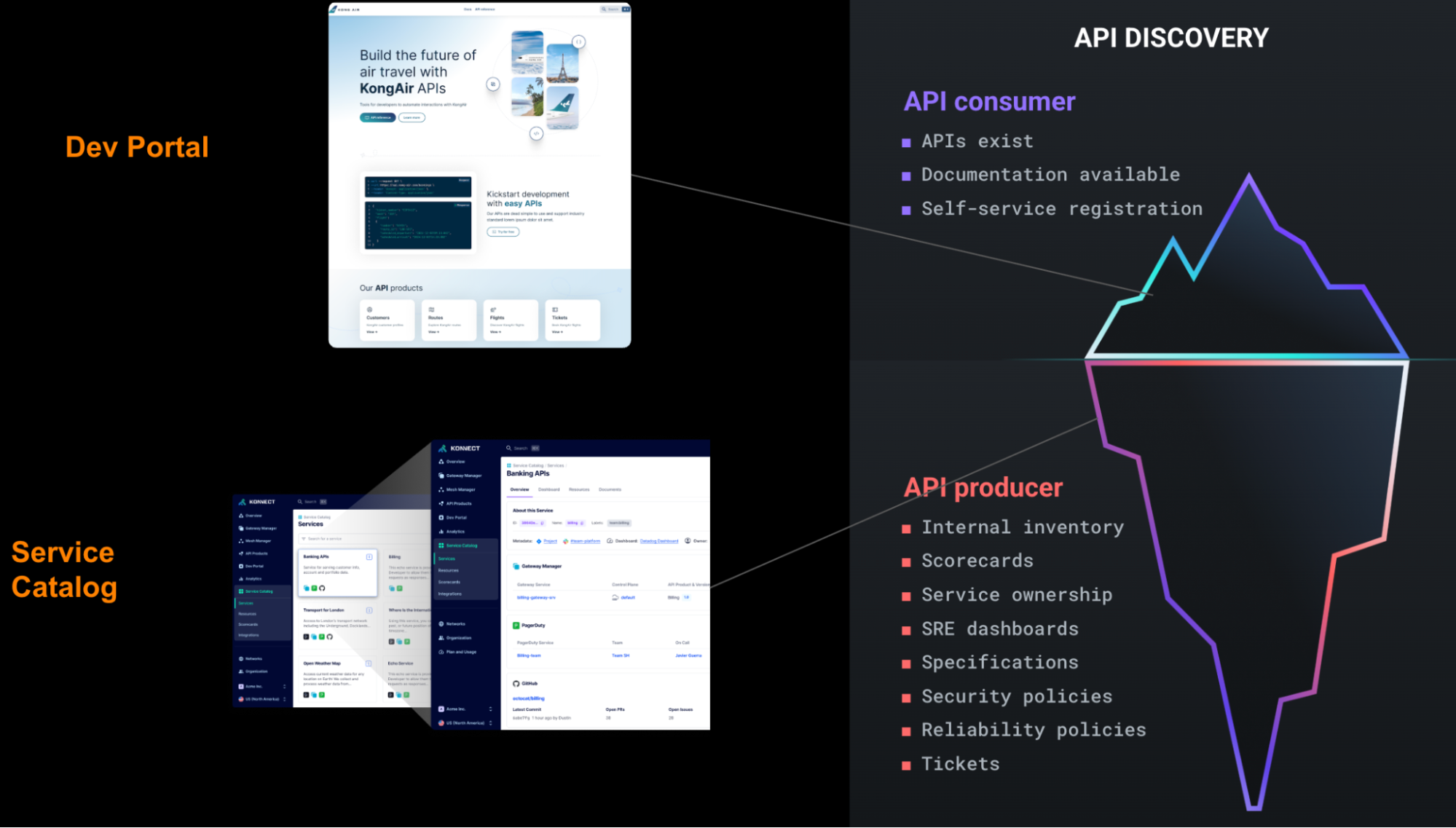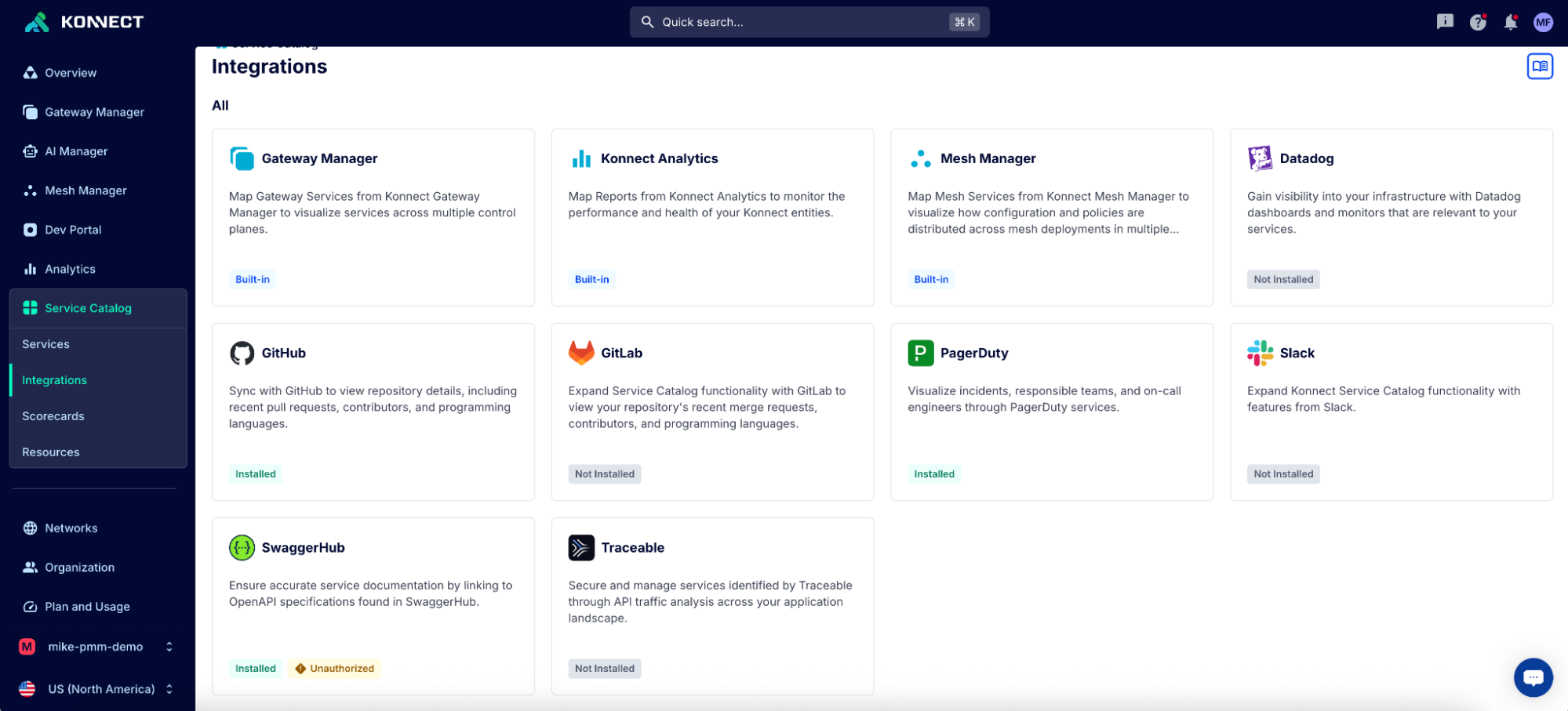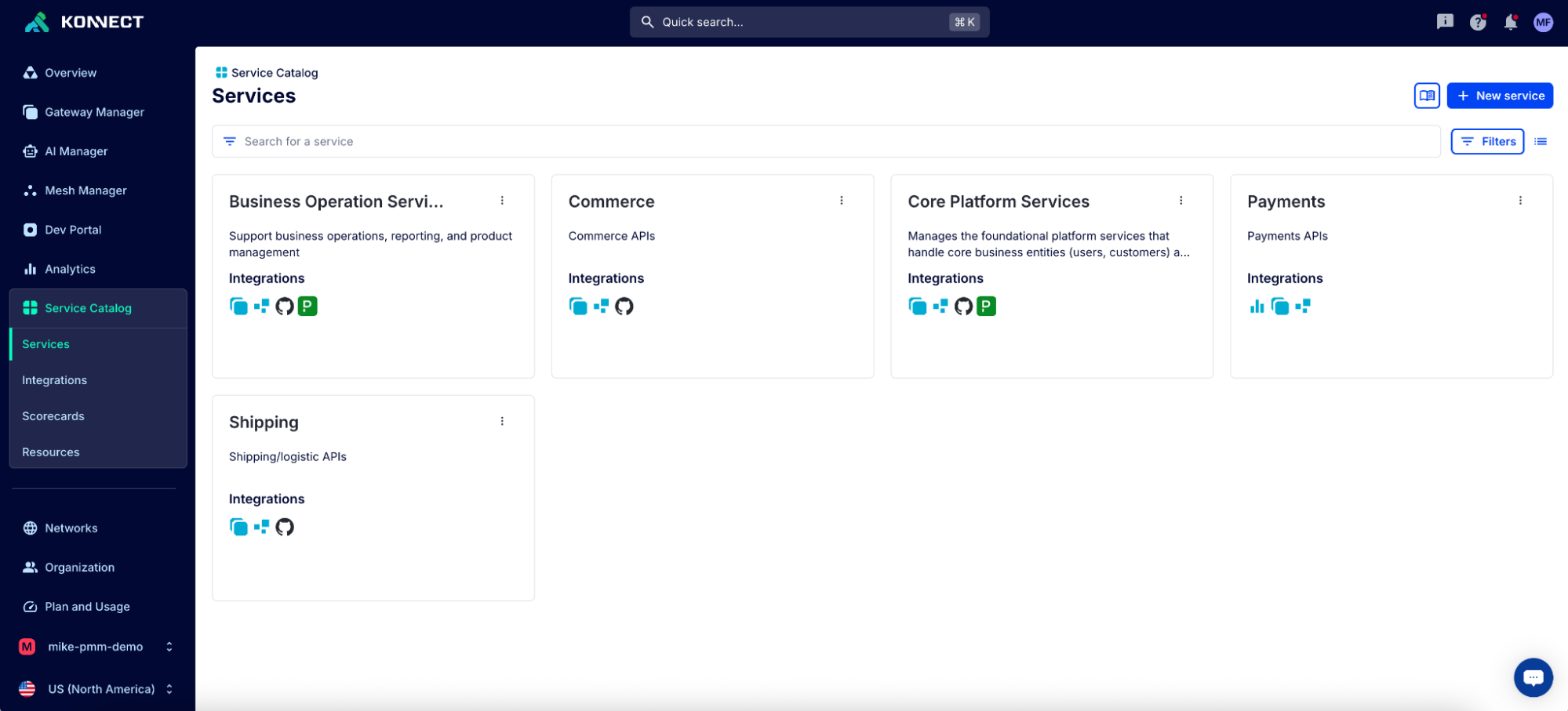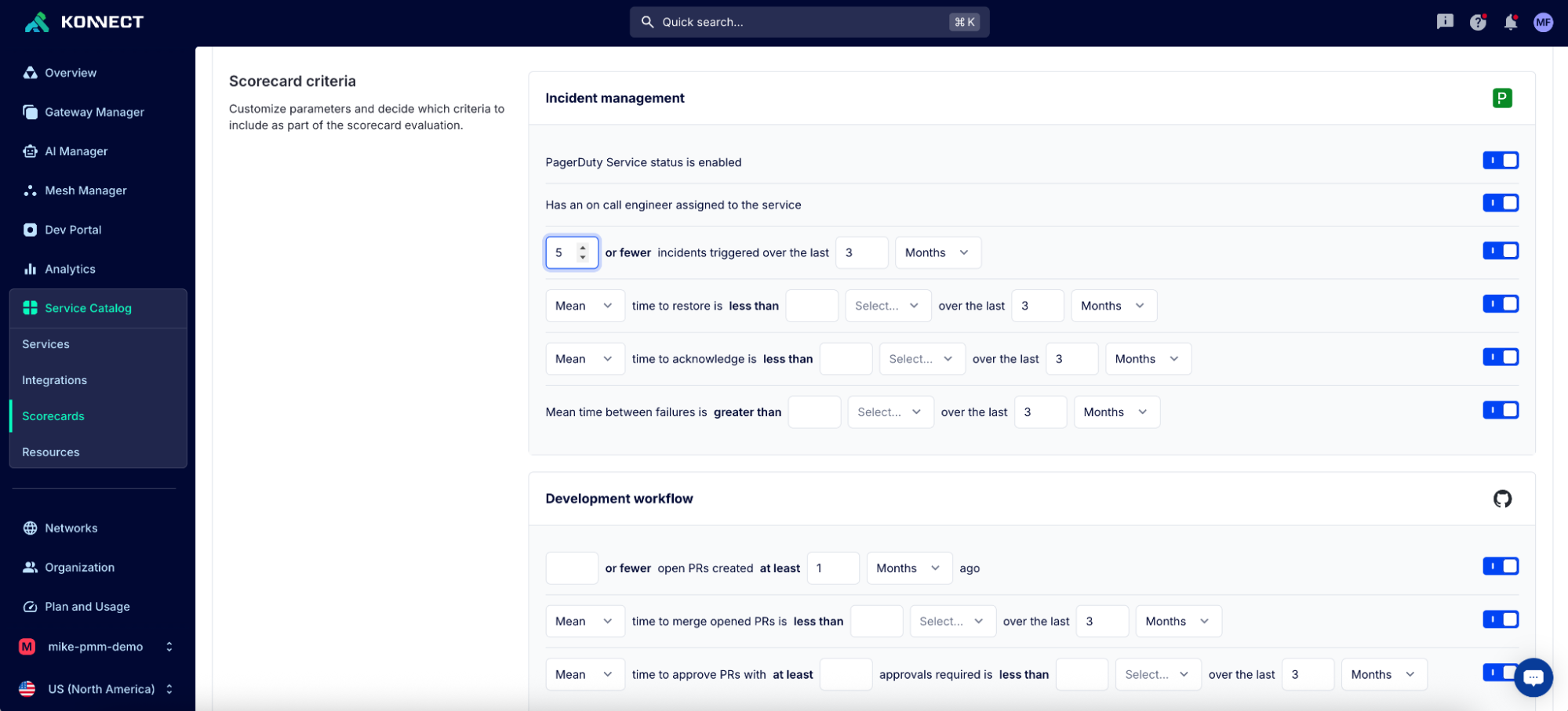Viewing the big picture
Once fully configured, Service Catalog provides multiple views into your service ecosystem:
- Resource inventory: Browse all discovered resources across integrations
- Service list: High-level overview of all services with the ability to search and filter
- Service details: Deep dive into a specific service with all its resources and history of changes
- Scorecard dashboard: Organization-wide compliance metrics
Each view serves different personas. Platform teams focus on scorecards and compliance, while application teams care about service details and dependencies.
Here's the thing. Every large enterprise needs service discovery and governance. The question is whether you'll solve it with yet another tool or leverage the API platform you already have.
The integration advantage
Kong Konnect already sits at the center of your API traffic. It knows:
- Which services are receiving traffic
- Real-time and historical performance data, consumption patterns, and error rates
- Security policies and their enforcement
Adding a separate internal developer platform means duplicating this knowledge and keeping it in sync. When your gateway knows a service is down, shouldn't your service catalog know too?
Operational reality
Building, running, and maintaining a standalone IDP like Backstage is a huge undertaking:
- Another platform to secure, scale, and maintain
- Custom integrations to build and maintain
- Synchronization challenges with your API gateway
- Separate access controls and audit logs
- Additional training and onboarding
By contrast, Service Catalog lives where your teams already work and allows for rapid onboarding, as shown in the quickstart guide. The same Konnect interface they use for API management now provides service discovery and governance.
The bottom line
Platform teams don't need another tool to manage. They need their existing platform to provide necessary tooling designed to work together intelligently. Service Catalog enhances the Kong Konnect API platform to solve the producer-side discovery problem without adding operational complexity.
The era of shadow APIs and service sprawl doesn't have to be your reality. When your API platform knows about every service, not just the ones it proxies, you can finally achieve the visibility and governance modern enterprises demand.
Ready to shine a light on your shadow APIs? Schedule a demo with our in-house experts to learn how Service Catalog can help solve your organization’s use case.








